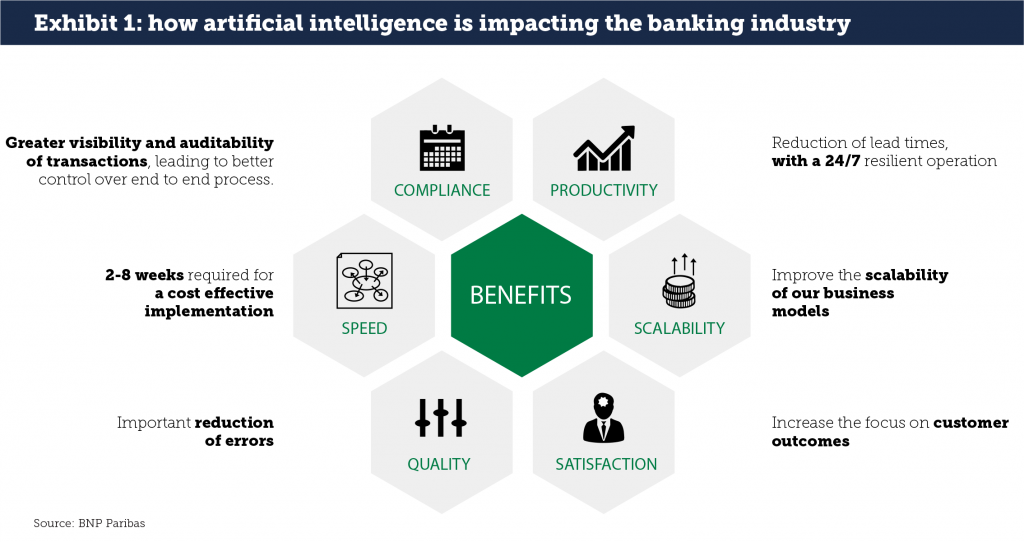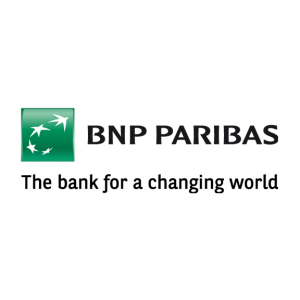Technology is the critical competitive element in our business today, ranging across all capital markets activities including securities lending. However, technological innovation is a difficult task to master: the current pace of change is fast, and a bank can rarely be sure at first look that a technology will be reliable, secure and fit for purpose. A guest post from Michael Saunders and Kevin Stahl of BNPP Securities Services.
A recurring theme in technological innovation is that efficiency equals greater profitability for clients. We see this both directly through increased trading opportunities, as well as indirectly, as our lower costs mean that we can be increasingly effective in the marketplace. This in turn encourages more counterparties to trade with us and keeps our client pricing competitive.
A vision for technology
The substantial advances in technology that have occurred in recent years give rise to a complicated question: what makes a bank? Some traditional banks now view themselves as technology companies first and banks second. Others take the approach that banks should be strong in technology, but that banking services are the foremost priority. We are trying to find a middle ground: we are a bank, but also need to stake out a leading position when it comes to new technology, especially in artificial intelligence, blockchain, and other potentially game- changing innovations.
Our operating vision for technology is to identify and deliver client benefits. We are working to help our clients and internal teams make decisions better, increase response times, reduce operational breaks, and identify trading opportunities. Three focus areas for us are artificial intelligence, smart data, and blockchain. We have a big picture view of what new technology at a bank can look like, and while it is different than traditional processes, we find that it can make a big impact on how well we conduct business.
Applications for technology innovation
Here are some of the new technological opportunities we are working on that will soon have an impact on the securities finance business:
Smart Chaser: We created a predictive analytics tool, Smart Chaser, to identify the trades most likely to fail before they occur. In phase 1 of the deployment, this innovative tool helps middle office teams focus their efforts on the most problematic trades before becoming a settlement issue, thereby helping to increase settlement rates and reduce settlement fails. The system then suggests smart email “chasers” to counterparties to generate a successful outcome.
Smart Chaser works by analyzing thousands of failed trades across 100 individual factors, then matching those factors against existing trades to map a likelihood that a trade may be problematic. Analysis factors include the time of trade, the value, the location of the counterparty, and of course the broker’s history. We’ve found 98% accuracy in predicting the probability of trade fails to date.
In phase 2 of deployment, we envision the system reading emails sent by counterparties warning of potential trade problems and then sending out automated replies. This takes artificial intelligence to the next level based on historical trading patterns. In a possible phase 3, our factor mapping can be combined with automated email analysis to both predict problematic trades and automatically generate emails to the counterparty.
We think that artificial intelligence has the potential to be impactful, from improving the scalability of our resources to providing greater visibility and auditability of transactions (see Exhibit 1).

We estimate that up to 30% of trades on behalf of institutional investors require some degree of manual intervention to finalize. When combined with existing industry platforms, Smart Chaser will mean fewer fails, which in turn reduces fees and increases client profitability. We expect to deploy Smart Chaser in securities lending in the future.
Neolink: Neolink is BNP Paribas’s client reporting platform, but it is also becoming a real-time trade monitoring tool delivering customizable data. Since the volume of data can be excessive to take in visually, Neolink will soon include a Virtual Assistant that uses cognitive algorithms to help clients mine information and find results quickly. We use natural language processing to make this happen, which is a substantial advance compared to static report delivery in PDF. When combined with the tools that many of us carry in our pockets – Siri for iPhone, Alexa on Google or any other voice recognition platform – Neolink becomes an extension of how we would ask a person to find information anywhere in the physical world.
Smart Data: Artificial intelligence is driven by data – no innovative technology solution is possible without it. At BNP Paribas, our approach has been to create a data hub to focus specifically on opportunities and use cases in smart data deployment. The idea is to harness data to create innovative services.
As a bank, we have the privilege of accessing detailed data on client businesses and their activities. The aim of Smart Data is to implement intelligent services in order to benefit clients and internal operations. It will capitalize on data that we produce and receive (big data).
Our program leverages the power of a new infrastructure by teaming up with other business lines from the BNP Paribas Group CIB’s Data Hub infrastructure. Thanks to new technological applications such as analytics, artificial intelligence, deep learning, and predictive analysis, we will be able to improve client experience and its sales strategies, particularly the way in which we target clients.
Blockchain (Cash Without Borders and other initiatives): BNP Paribas took an early first mover approach towards blockchain; we thought it had a variety of applications in banking. In December 2016, we completed our first real-time, cross-border blockchain payment as part of our “Cash Without Borders” concept. The cash movements settled in just a few minutes across three European countries.
We deployed a private blockchain in our own Treasury group and integrated it with our legacy technology. We found meaningful operational efficiencies from the test, including a better ability to manage cash across different international businesses.
Lastly, we partnered with Tata Consultancy Group to build a blockchain specifically for corporate actions processing. This has long been a complicated and error prone part of the securities industry. This blockchain captures asset servicing information, including merger and acquisition announcements and dividend payments, across 90 markets and 27 official sources in BNP Paribas’s proprietary network.
Our work in blockchain remains in the early stages; we see more pilot projects in our future and perhaps a potential opportunity to leverage our existing efforts into full-fledged businesses. Changing internal behavior and the external market takes time; we expect that these initial efforts will build momentum over time and may wind up being incorporated in later efforts that have broad commercial applications.
Impacts for securities finance
The securities finance marketplace has moved quickly from an semi-manual market, including emails and proprietary data feeds, to an electronic platform. An estimated 70% of our market’s volume is now conducted on electronic marketplaces with minimal human intervention; this includes virtually all General Collateral and some of our specials as well. The figure will likely never reach as high as 90% as there will always be trades that require human intelligence to sort through. However, we can see a day when, after credit approvals are complete and lenders have signed off on collateral acceptance policies, almost all trading that occurs will be automated to some degree.
In an era where computers make loans to other computers based on pre-set parameters, how can we continue to offer value to our clients? Our response is to maximize our expertise to support a mix of efficient operations, pricing optimization, and a focus on the client experience. In operations, Smart Chaser is one example of how we are helping our teams focus on the most likely to fail transactions, which reduces fail costs and operational roadblocks. In pricing, the use of smart data across multiple sources can be used to discover optimal prices for securities loans, including supply and demand characteristics for each individual security. And, in the client experience, Neolink is how we are using artificial intelligence to bring forward data, insights, and information using natural language processing.
We see a range of new opportunities on the horizon for technology in securities finance. While all developments and innovations are important, we are realistic and know that every technological opportunity may not be the right fit. However, in securities lending, we expect to take advantage of core research being conducted here at BNP Paribas. Our intention is to then share this innovation through our business activities and client offerings.
 Michael Saunders is Head of Investments and Trading, Securities Lending North America at BNP Paribas. In this capacity, he is responsible for managing client lending and cash collateral reinvestment portfolios with a focus on risk management. Michael is also a member of the securities lending group’s Investment Committee and Product Management Committee.
Michael Saunders is Head of Investments and Trading, Securities Lending North America at BNP Paribas. In this capacity, he is responsible for managing client lending and cash collateral reinvestment portfolios with a focus on risk management. Michael is also a member of the securities lending group’s Investment Committee and Product Management Committee.
 Kevin Stahl has been with BNP Paribas since 2012 and is currently the Head of Business Development for the Market and Financing Services division of BNP Paribas Securities Services North America. He is responsible for the growth of the business and the development of new client solutions across the Agency Lending, Financing and Forex products.
Kevin Stahl has been with BNP Paribas since 2012 and is currently the Head of Business Development for the Market and Financing Services division of BNP Paribas Securities Services North America. He is responsible for the growth of the business and the development of new client solutions across the Agency Lending, Financing and Forex products.



